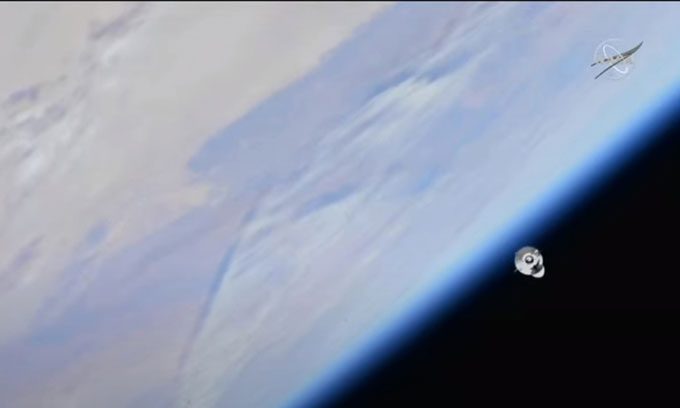On November 27, SpaceX successfully completed its 26th cargo resupply mission (CR-26) to the International Space Station after several days of delays.
The Falcon 9 rocket launched the Dragon spacecraft into orbit. (Video: NASA)
The Dragon cargo spacecraft from SpaceX lifted off from NASA’s Kennedy Space Center in Florida at 2:20 AM on November 27, Hanoi time, and docked with the International Space Station (ISS) at 7:30 PM on the same day as both flew over the Pacific Ocean. The mission was initially scheduled for November 22 but was postponed due to bad weather.
The CR-26 flight carried a total of 3,500 kg of cargo, including two new iROSA solar arrays, a variety of experimental equipment, dwarf tomato seeds, supplies, and several treats for the astronauts, such as ice cream, spicy green beans, pumpkin pie, and candy corn for Thanksgiving.
“We are excited about the cargo received and will get to work,” NASA astronaut Josh Cassada aboard the ISS told Mission Control after the spacecraft successfully docked.
“We hope you can enjoy the long-awaited ice cream soon,” replied Megan Harvey from Mission Control.

The Dragon spacecraft viewed from the ISS as it prepares to dock on November 27. (Photo: NASA)
The solar arrays will be installed outside the ISS during planned spacewalks on November 29 and December 3. Together, they will enhance the station’s energy output by 20% to 30%.
Meanwhile, inside the space station, astronauts will conduct a series of new experiments, notably a study on 3D cultured heart tissue in a microgravity environment to test potential therapies that could prevent or slow the progression of heart disease, and an experiment to grow dwarf tomatoes from seeds to boost food production beyond Earth.
Nutrients are a crucial component for maintaining good health in space, but fresh food on the ISS is in short supply. Astronauts primarily consume pre-packaged meals during their six-month missions in orbit.
Dwarf tomato seeds will be grown under two different light treatment methods inside special plant growth chambers to measure their impact on the number of tomatoes that can be harvested, as well as their nutritional value and flavor. If all goes as planned, the first batch of tomatoes could be harvested by next spring.
The CRS-26 spacecraft is expected to remain in orbit for 45 days before separating from the space station and returning to Earth. It will land in the ocean using a parachute.


















































